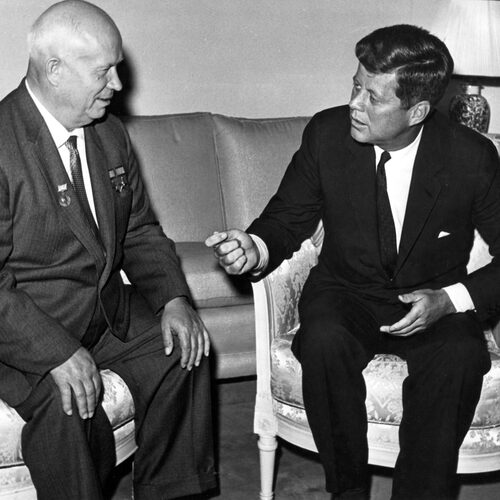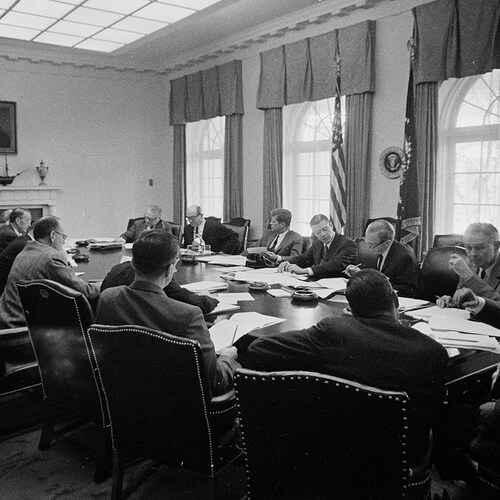Cuban Missile Crisis
Taking place from October 16, 1962 to October 28, 1962, these 13 days were some of the most intense days in human history as during this time the United States and USSR were on the brink of all out nuclear war. While many prior events such as the Bay of Pigs Invasion contributed to the Cuban Missile Crisis, the event began when the United States conducted a covert operation over Cuba and discovered that they were building missile silos to house nuclear warheads. This was a major issue for the United States since Cuba was only 485 miles (780 km) from Florida. This discovery prompted United States President John F. Kennedy to address the nation about the stockpiling of Soviet missiles in Cuba and how a naval quarantine would be imposed to prevent these weapons from reaching Cuban soil. Simultaneously, the United States ambassador to the USSR, Foy Kohler, delivers a letter from Kennedy to Soviet Premier Nikita Khrushchev. Kennedy details in his letter that all out nuclear war would destroy all sides in the conflict and that there would be no winners from such an event.
During these conversations between Kennedy and Khrushchev, Fidel Castro, leader of Cuba, writes to Khrushchev urging him to fire his weapons before Kennedy has a chance to do so. Despite his efforts, Khrushchev refuses to fire on the United States as he is aware that there would be no winners in this war. On October 27, 1962, a US U-2 plane was shot down over Cuban soil which many feared was about to be the start of nuclear war. However, Kennedy did not believe that Khrushchev was responsible for this and both leaders began to talk about de-escalating the situation.
After much back and forth between the two leaders, Khrushchev and Kennedy reach an agreement. Khrushchev asks Kennedy to remove all US missiles from Turkey and in exchange all Soviet missiles in Cuba would be dismantled. Kennedy honors this agreement and pledges to Khrushchev that Cuba would not be attacked following the USSR’s withdrawal. This marked the end of one of the most tense times in human history and thanks to the actions of both leaders and other high-ranking officials, both nations had just dodged what could have been the end of the world as we know it.


